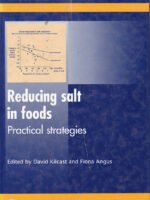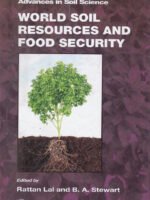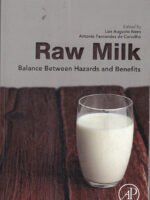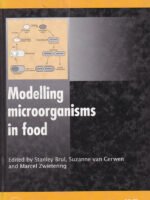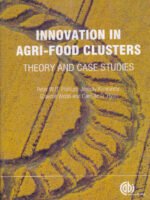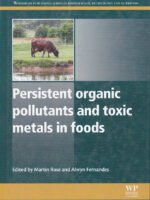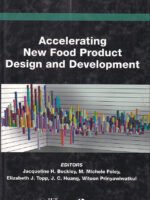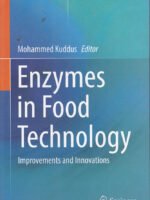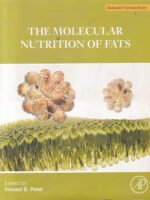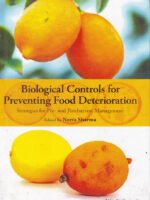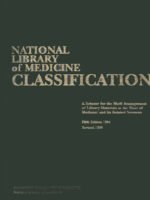-
Space and Time Visualisation
₹6,420.00The conclusions link to related research and present suggestions for further work including representing landscape not just as another 3D model but as historic evolution with specialised tools.
₹12,154.00 -
Food Safety Hazard Guidebook
₹7,040.00This book provides a concise, accessible and affordable source of reference covering a wide range of known and emerging food safety hazards, both biological and chemical.
₹12,899.00 -
Reducing Salt in Foods: Practical Strategies
₹9,705.00Concerns have grown that consumption levels of salt are well above those needed for nutritional purposes and that this can lead to adverse effects on health, in particular cardiovascular disease. Consumers are increasingly looking to reduce their salt intake, making salt reduction a priority for food manufacturers. This is not straightforward, though, as salt plays an important role in food preservation, taste and processability. Written by a team of international experts, Reducing salt in foods provides a unique review of current knowledge in this field.
₹22,950.00 -
Seafood Ecolabelling
₹10,827.00SEAFOOD Ecolabelling Principles and Practice Edited by Trevor Ward and Bruce Phillips In recent years there have been some major developments and a greatly increased recognition of the importance of more sustainable and environmentally-friendly fishing and fish-farming methods.
₹25,650.00 -
World Soil Resources and Food Security
₹8,633.00Ancient civilizations and cultures―Mayan, Aztec, Mesopotamian, Indus, and Yangtze―were built on good soils, surviving only as long as soils had the capacity to support them. In the twenty-first century, productive soil is still the engine of economic development and essential to human well-being. The quality of our soil resources, however, is threatened by human-induced and natural perturbations.
₹15,899.00 -
Raw Milk: Balance Between Hazards and Benefits
₹10,197.00Raw Milk: Balance Between Hazards and Benefits provides an in-depth nutritional and safety analysis of raw milk. This high-quality reference is comprised of contributions from global researchers highly specialized in the field. The book is divided into five sections that address the characteristics of raw milk, production guidelines and concerns, the benefits and hazards of raw milk, and the current market for raw milk.
₹19,499.00 -
Modelling Microorganisms in Food
₹9,343.00Predicting the growth and behaviour of microorganisms in food has long been an aim in food microbiology research. In recent years, microbial models have evolved to become more exact and the discipline of quantitative microbial ecology has gained increasing importance for food safety management, particularly as minimal processing techniques have become more widely used.
₹22,099.00 -
-
Foodborne Pathogens: Hazards, Risk Analysis and Control
₹15,686.00Effective control of pathogens continues to be of great importance to the food industry. The first edition of Foodborne pathogens quickly established itself as an essential guide for all those involved in the management of microbiological hazards at any stage in the food production chain. This major edition strengthens that reputation, with extensively revised and expanded coverage, including more than ten new chapters.
₹37,250.00 -
Innovation in Agri-food Clusters: Theory and Case Studies
₹4,927.00Innovation has moved through a range of revolutionary epochs, but there is no clear picture of how, or if, innovation can be managed. This single, coherent volume that outlines the theory and practices related to innovation, offering a critical assessment of the strengths and weaknesses of different approaches, backed up with empirical evidence.
₹8,650.00 -
Food: Alphabet City Magazine 12
₹752.00Food is essential to our sense of place and our sense of self, but today as fast food nation meets the slow food movement and eating locally collides with on-demand arugula our food habits are shifting. Food examines and imagines these changes, with projects by writers and artists that explore the cultural and emotional resonance of food, from the everyday Dada of mashed potatoes and Jell-O to the rocket science of food eaten by astronauts in space.
₹1,599.00 -
Alternative Food Networks, Knowledge, Practice, and Politics
₹8,349.00Farmers’ markets, veggie boxes, local foods, organic products and Fair Trade goods – how have these once novel, “alternative” foods, and the people and networks supporting them, become increasingly familiar features of everyday consumption? Are the visions of “alternative worlds” built on ethics of sustainability, social justice, animal welfare and the aesthetic values of local food cultures and traditional crafts still credible now that these foods crowd supermarket shelves and other
₹15,350.00 -
Persistent Organic Pollutants and Toxic Metals in Foods
₹12,665.00Persistent organic pollutants (POPs) and toxic elements, such as dioxins, flame retardants, lead and mercury, are substances of major concern for the food industry, the regulator and the public. They persist in the environment, accumulate in food chains and may adversely affect human health if ingested over certain levels or with prolonged exposure. Persistent organic pollutants and toxic metals in foods explores the scientific and regulatory challenges of ensuring that our food is safe to eat.
₹24,250.00 -
Accelerating New Food Product Design and Development
₹10,646.00To compete in today’s marketplace, food product developers are under pressure to create innovative new products at a time when there are demands on them to do more with less of everything. In Accelerating New Food Product Design and Development, a group of seasoned food industry business professionals and academics show today’s food scientists, technologists, and product developers the contemporary R&D processes they need to maximize speed, quality, and efficiency.
₹25,199.00 -
Enzymes in Food Technology: Improvements and Innovations
₹8,851.00The integration of enzymes in food processing is well known, and dedicated research is continually being pursued to address the global food crisis. This book provides a broad, up-to-date overview of the enzymes used in food technology. It discusses microbial, plant and animal enzymes in the context of their applications in the food sector; process of immobilization; thermal and operational stability; increased product specificity and specific activity; enzyme engineering; implementation of high-throughput techniques; screening of relatively unexplored environments; and development of more efficient enzymes.
₹16,550.00 -
Selenium: Chemistry, Analysis, Function and Effects
₹11,421.00Although toxic in large doses, selenium is an essential trace mineral in the animal diet and in some plants. It has a role in making antioxidant enzymes and a particular role in the functioning of the thyroid gland. This volume examines the chemical activity of selenium and its functional health effects eg towards cancers, in the heart and brain.
₹21,050.00 -
Aviation Food Safety
₹11,987.00The provision of safe food to airline passengers is now a multi-billion dollar industry worldwide. As the aviation industry continues to grow year on year, so do passenger food service expectations, with increasing demand for wider choice and greater quality. Often neglected and under-regulated, food safety should be of paramount importance amid this growth.
₹28,400.00 -
America′s Food What You Don′t Know About What You Eat
₹1,186.00We don’t think much about how food gets to our tables, or what had to happen to fill our supermarket’s produce section with perfectly round red tomatoes and its meat counter with slabs of beautifully marbled steak. We don’t realize that the meat in one fast-food hamburger may come from a thousand different cattle raised in five different countries. In fact, most of us have a fairly abstract understanding of what happens on a farm.
₹2,599.00 -
The Molecular Nutrition of Fats
₹11,319.00The Molecular Nutrition of Fats presents the nutritional and molecular aspects of fats by assessing their dietary components, their structural and metabolic effects on the cell, and their role in health and disease. Subject areas include molecular mechanisms, membranes, polymorphisms, SNPs, genomic wide analysis, genotypes, gene expression, genetic modifications and other aspects.
₹17,260.00 -
Biological Controls for Preventing Food Deterioration
₹10,464.00Various biotic factors cause diseases in crops, which result in food losses. Historically pesticide development has been instructive to us in terms of the benefits derived as well as the hazards that accompany their indiscriminate use. The application of fertilizers and pesticides to crops has become a norm in agricultural production, but this has led to resurgence in pests as they have developed resistance to such chemicals. Biological control of plant pests and pathogens is part of the solution to this problem. This is an area that continues to inspire research and development.
₹20,099.00
- Home
- Categories
- Architecture
- Agriculture and Farming
- Business & Management
- Engineering
- Fashion & Textiles
- General and References
- Humanities & Social Science
- Islam
- Library Science
- Literature & Literary Studies
- Mathematics & Statistics
- Media, Information & Communication Industries
- Medicine
- New Arrivals
- On Sale
- Science & Technology
- Sports
- Top Selling
- Travel & Tourism
- Annual Reviews
- Exclusive
- Blog
- Others


